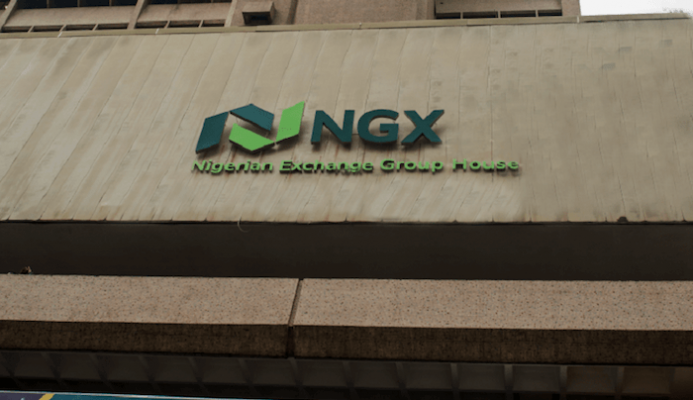By Joerg Niessing
The downfall of iconic Swiss travel agency Kuoni exemplifies the grave options available to companies with pre-internet business models.
In 2006, top leadership at Kuoni – the Swiss tour operator – understood they were facing an existential crisis. Their long-successful business model was mainly built around a now endangered transaction: Booking holiday packages face-to-face at a travel agency. The digital revolution had begun, and managers at Kuoni could read the writing on the wall.
Kuoni’s own efforts to “go digital” had been ongoing for ten years at that point. But its cumbersome online booking tool – requiring separate account logins for flights, hotels, rental cars, etc. – represented a mere single-digit slice of overall business. It lagged far behind the crop of emerging online players in the travel space at that time, e.g. TripAdvisor, Expedia and Opodo. Kuoni’s circumstances looked bleak.
Then, one of this sleek new breed of online travel agencies (OTAs) stepped forward as a potential saviour. The American company Priceline, flush with cash from an IPO floated at the peak of the dot-com boom, offered to add Kuoni to its fast-growing portfolio of travel services. The proposed “merger of equals” made sense, at least on paper: Each of the companies was valued at around US$2 billion in 2006. For the moment, both the rising and falling stars were at the same height. It was an opportunity that surely would not last.
For Kuoni’s management, there were three choices on the table: Pursue the Priceline merger, ramp up digital efforts in a bid to compete with the OTAs, or pivot to its core strengths (providing luxury travel experiences to a high-end clientele).
The crosshairs of digital disruption
The course Kuoni subsequently took proved disastrous for the company, as outlined in my case study “Kuoni: Missing the Digital Boat” (co-authored by Lisa Duke and Jan Sedlacek). At first glance, the main difference between Kuoni and other casualties of digital disruption may seem to be the inevitability of its downfall, due to the travel industry being one of the first (and one of the hardest-hit) to encounter the digital iceberg. Our case study, however, explores two decades’ worth of internal failures at Kuoni that rendered the company helpless to save itself despite its favourable market position and formidable resources.
Moreover, Kuoni’s story is not as unique as it may seem. As the successive cycles of the digital revolution work their way through the global economy, many (if not most) industry incumbents will be blown toward the same catastrophe. They will have to become faster and more responsive in order to avoid Kuoni’s fate.
How Kuoni began
To understand Kuoni’s fall, you must first understand its former glory. Swiss readers (and many European ones) almost certainly need no introduction to the company. Its legacy dates to 1906, when Alfred Kuoni opened a travel agency in Zurich, initially as a subsidiary of the family’s haulage business. In the post-World War II years, its name became synonymous in Switzerland with an escape from the mundane. Schoolteachers would chide students whose minds seemed to wander by asking whether they had “been on holiday with Kuoni”.
But the advent of the internet brought dramatic changes to the travel industry. Hotels and airlines began to sell directly to customers from their own websites. Airlines subsequently cut commissions to travel agents, destroying their revenue model overnight. The impact on the demand side was huge: All of a sudden it was possible for consumers to compare rates and book flights themselves from the comfort of their own homes. Kuoni suffered from “boiling frog syndrome” – ignorance of the bigger picture and failure to change strategy in order to address these market threats. As Amazon’s Jeff Bezos wrote in his 2017 letter to shareholders: “Big trends are not that hard to spot, but they can be strangely hard for large organisations to embrace.”
Soon after the rise of the OTAs, Kuoni’s tour operating revenues entered free fall. For many years, however, the management refused to recognise the reasons behind this decline. Year after year they found new excuses: the terror attacks of 9/11 and in Egypt, the market entry of big German competitors, a particularly sunny winter taking away people’s lust for travel, and so on.
Kuoni after 2006
In the end, Kuoni spurned Priceline’s offer to merge, believing that a bunch of websites barely eking out a profit could not possibly be worth US$2 billion – to management’s minds, the valuation must have been inflated.
Kuoni recognised the incredible growth rates in online business and made “going online” a top priority. But the company complacently proceeded with a “just add digital” strategy designed to add bells and whistles to its core business. Well into the 2010s, Kuoni continued printing holiday brochures with fixed prices as it had in the pre-internet days, even though the immediacy of digital allows for moment-to-moment price adjustments. Consequently, the company contractually bound itself to rates that were almost guaranteed to wind up uncompetitive.
On the tech side, Kuoni’s lacklustre efforts to overtake OTA competitors grew increasingly desperate. A chief digital officer was appointed for every business unit and a tech-savvy CEO oversaw it all, yet the company’s expensive digital presence served only to highlight its shortcomings compared to digital-native OTAs. Instead of the core specialisation (i.e. extraordinary and highly individualised holiday experiences) that made Kuoni an icon in the first place, management continued to push a convenience- and price-based model like Priceline and Expedia. The vain attempts to compete on price while maintaining an aging IT infrastructure drew disaster closer and closer. By 2010, Kuoni had ceased providing value even to its shareholders.
To be sure, the company was aware it had lost touch with its customers and tried to fix the problem with new strategies, new values, re-branding, extensive customer research, omni-channel marketing and automation. Trendy marketing campaigns were launched, like the refurbishment of branded locations in an awkward attempt to pull in a hipster clientele. None of this, however, could compensate for the deep resistance to change at the heart of the company.
Then a final pair of enormous errors brought Kuoni’s story to its unhappy conclusion. In 2010, a botched bid to overhaul the IT back-end saw the developers and support staff servicing the legacy system summarily fired before the new infrastructure was fully in place. The following year, Kuoni bought B2B hotel database Gulliver’s Travel Associates (GTA) for US$720 million, the most it had ever spent on an acquisition. There was only one problem: Despite its use of many online portals to distribute inventory, GTA was essentially just another middleman with a “digital in name only” (DINO) business model. Kuoni did not really know where and how they could create value for their customers.
After all these missteps, there was no going back. In 2015, the bulk of Kuoni’s tour operating and travel agency business was sold to the DERTOUR, in the travel division of German cooperate conglomerate REWE Group.
Looking back, what’s remarkable about Kuoni’s decline is its seeming belief that it could become a digital company without reshaping the fundamentals of the organisation. As former Kuoni executive Jan Sedlacek has said, “Culture, when it comes to a true digital transformation, is like an auto-immune disease: If you inject the new DNA – and Kuoni surely tried to – the organisation will start to fight against itself.”
Missing the digital boat
If they could have somehow foreseen what the next decade held in store for Kuoni, the managers back in 2006 would surely not have treated Priceline’s offer so lightly. So one lesson from Kuoni’s cautionary tale is simply “If you can’t beat them, join them”. But to recognise imminent defeat early enough to allow for retreat requires humility, a value not held in high esteem in Kuoni’s corporate culture.
In addition, our case study asks whether Kuoni’s fate was irrevocably sealed even after the Priceline ship had sailed. Almost until the bitter end, management clearly believed a turnaround was possible. Otherwise, why would they continue to pour money into digital initiatives as alarm bells sounded all around them? They failed to perceive, however, that the ultimate advantage of the OTAs was not technology itself. Priceline, Expedia et al were fundamentally different from Kuoni, built entirely to capitalise on the frictionless, distance-defying connection to consumers that did not exist before the internet. Customer-centricity was paramount in everything they did. While Kuoni struggled to save itself using old-school competitive methods – primarily by slashing prices – the OTAs tried constantly to serve customers better. Their single-minded obsession with the customer gave their strategy a lethal coherence; their lack of an established legacy to maintain enabled them to execute at lightning pace and minimum cost.
If the OTAs were speedboats, Kuoni was a massive cruise ship on a collision course with the digital iceberg. Barring the merger with Priceline, Kuoni’s best chance at survival would have been to abandon ship and put many speedboats in the water. Presumably, the company could have pivoted back to providing unforgettable holiday experiences to a niche segment of travellers. But that would have meant death to Kuoni’s long-standing (and never achieved) dream of becoming a mass tour operator. It would have necessitated scaling down radically and ruthlessly jettisoning organisational ballast. They could have also created other innovative business models not linked to the past – i.e. speedboats to board once the iceberg collision became unavoidable. Some of these speedboats would sink; some could have helped to change the direction of the cruise ship; some could have even grown bigger than the cruise ship in the future. But as Kuoni was unable to cut the lines along the business models, it was impossible to transform the complex system of long-standing organisational structures, cultures, IT systems and managerial power.
As new industries are caught in the currents of digital disruption, many more incumbents will likely be put in Kuoni’s position. They too will face the sobering choice of either waging a doomed effort to keep up with younger, spryer competitors, or abandoning ship – and sentimentality.
Joerg Niessing is an Affiliate Professor of Marketing at INSEAD. He co-directs the Leading Digital Marketing Strategy and B2B Marketing Strategies programmes at INSEAD.











